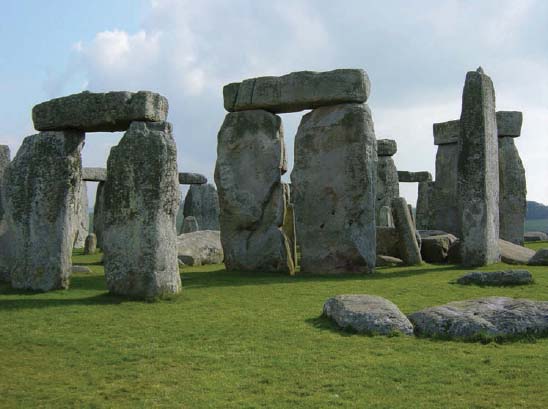Art Principles and HistoryPrehistoric Art |
What is Stonehenge? |
Stonehenge is perhaps the most famous megalithic structure from the Neolithic period, and an example of a large-scale cromlech. Its name comes from the Saxon language and means “the place of hanging stones.” The site, located near Salisbury in England (about eighty miles west of London), was built over a thousand years starting from around 3,000 B.C.E. Seventeen enormous megaliths weighing up to fifty tons each remain standing in an approximate circle, though scholars think the site originally included at least thirty megaliths. All together, Stonehenge is made up of around 150 simple, non-decorated stones, some of which have fallen down and broken. At the center of the site is an altar stone, though whether this stone was used as such is unknown.
It is unclear exactly how Neolithic people constructed Stonehenge. The blocks alone are extremely difficult to move and both scholars and amateurs have attempted to recreate the engineering marvel. The post-and-lintel system is evident in the megalithic henges themselves, and it is notable that no mortar was used to hold them together—all of the joints are dry joints. It is possible that timber played a role in the construction of Stonehenge, though any timber remains have since disappeared.

There are many theories about the purpose of Stonehenge, a Neolithic site located in southern England.
